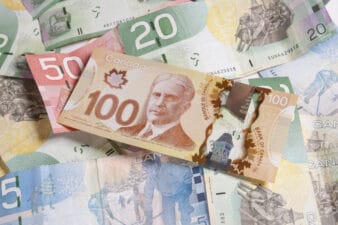I like utility companies. The steady income, growth, and dividend increases that come from many of these companies comfort me. Sure, it can be a rush to double your money on the latest hot stock, but it can also be quite depressing when those stocks fall equally hard. Therefore, I prefer long-term, steady growth to the rise and fall of hot names.
There are many stocks to buy in the utility space. Unless you are going to buy an ETF, it is difficult to own them all. If you want to try your hand at picking one that has a combination of growth, strong dividends, and long-term price potential, you need to look a little deeper into them. In this article, I want to take a look at the potential for investing in one of the smaller names in the space: Innergex Renewable Energy (TSX:INE).
What to look for in a utility
There are three basic factors that I look for when deciding to choose a utility stock. The first is the income that the stock provides. I buy these stocks for their dividends, after all, so I want to make sure the payout is strong and growing. The second is a strong growth profile. Finally, I like to see that the company has a diversified and expanding portfolio of properties. So, is Innergex a good potential candidate?
Dividends
Innergex will probably not knock your socks off as a dividend stock when you first take a look at its current yield. The dividend sits at about 3.76% at the time of this writing. You can easily find other stocks with dividends of about 5% or more that might seem more appealing. Yield, though, is not the only indicator of growth.
Investors also need to look at dividend growth. Innergex has a great track record of over seven years of consecutive dividend increases. The February 2020 increase saw the yearly dividend increase by $0.02, going from $0.70 to $0.72 a share. This amounts to an inflation-beating increase of about 2.8%
Growth
Aside from its dividend, the company posted adequate financial results in its Q1 2020 report. Revenue increased by 5% year over year, although adjusted EBITDA was down 5%. The Cartier Wind Farms acquisition contributed to these positive numbers.
Innergex generated $91 million in free cash flow over the past 12 months. Strong free cash flow growth is the key to debt repayment, capital expenditures, and dividend growth going forward. Currently, the dividends amount to 113% of free cash flow, as opposed to 77% a year earlier. The lower free cash flow and resulting higher payout ratio is disappointing but will hopefully be a short-term issue.
Diversification
Innergex is continuing to expand its geographic footprint with two more projects in the United States. The two new sites, Phoebe Solar Project and Foard City Wind Project, are both located in Texas and contributed positively to revenues. The company has projects located throughout North America, South America, and Europe.
The bottom line
As you can see, Innergex ticks off each box. It has a solid, growing dividend, acceptable financial results, and fantastic geographical diversification. The biggest downside at the moment is the dip in free cash flow and the resulting spike in the payout ratio. However, this issue will likely be temporary.
I like the fact that Innergex reports the dividend-payout ratio as a percentage of free cash flow as opposed to EBITDA or some other metric. This is a stock you can own today if you like smaller renewable energy companies and don’t mind the lower initial yield.







